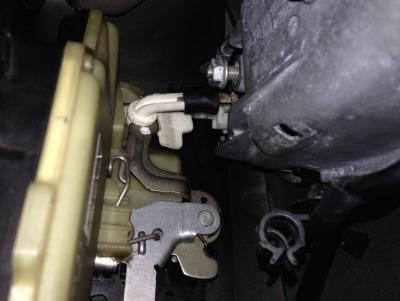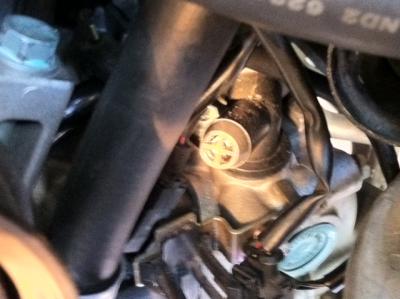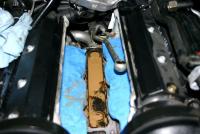Welcome to RennTech.org Community, Guest
There are many great features available to you once you register at RennTech.org
You are free to view posts here, but you must log in to reply to existing posts, or to start your own new topic. Like most online communities, there are costs involved to maintain a site like this - so we encourage our members to donate. All donations go to the costs operating and maintaining this site. We prefer that guests take part in our community and we offer a lot in return to those willing to join our corner of the Porsche world. This site is 99 percent member supported (less than 1 percent comes from advertising) - so please consider an annual donation to keep this site running.
Here are some of the features available - once you register at RennTech.org
- View Classified Ads
- DIY Tutorials
- Porsche TSB Listings (limited)
- VIN Decoder
- Special Offers
-
OBD II P-Codes - Paint Codes
- Registry
- Videos System
- View Reviews
- and get rid of this welcome message
It takes just a few minutes to register, and it's FREE
Contributing Members also get these additional benefits:
(you become a Contributing Member by donating money to the operation of this site)
- No ads - advertisements are removed
- Access the Contributors Only Forum
- Contributing Members Only Downloads
- Send attachments with PMs
- All image/file storage limits are substantially increased for all Contributing Members
- Option Codes Lookup
- VIN Option Lookups (limited)

C2951
-
Posts
62 -
Joined
-
Last visited
Content Type
Profiles
Events
Forums
External Paint Colors
Downloads
Tutorials
Links Directory
Collections
Store
Posts posted by C2951
-
-
Well yes - he's Done that but the linkage between the handle and the latch is intact, it just doesn't release the latch. It's like the lock Inside the latch won't disengage.
-
-
A friend with a '99 C2 cannot get his driver's side door to unlatch using either the external or internal release handles. This isn't a question of a battery discharge. He gets no resistance from the exterior release, some resistance from the interior release but neither of those result in the door unlatching.
My thinking is that the lock motor has jammed in the locked position and isn't releasing the cam that holds the latch in the locked position.
He has the interior door panel most of the way off - is there something he can trip on the latch mechanism to release the latch so that he can remove the thing???
-
Thanks Matt, I tried that but when I didn't get movement, I wondered if I was missing something. I'll go back in and use a little more force.
Appreciate the reply and the pics!
-
What is the secret to disengaging the exterior door handle from the lock mechanism? I can see a white plastic piece that looks like it snaps onto a threaded rod coming from the door handle, but no idea how to free it to the point that I can snap the plastic off the rod.
This is the piece just below the partially threaded nut in the picture.
TIA for any help. -
that would be the extension used on what appears to be a ford F250 used to lower the spare tire. There is an adapter that looks similar to the socket used for security lug bolts that would go on the end. it gets inserted in the rear bumper of the truck and you crank it to lower or raise the spare tire winched up underneath
Exactly right - that came on my 2000 F-250 and was mounted under the hood on the upper radiator support with the jack crank that mates with the female end and is used with the keyed extension to lower the spare. Used it a few time in the 12+ years I've owned it.
-
Thanks for the information!
-
Looks identical to the 3.4 that came in my '99. Except all Torx fasteners and the oil pan has shrouds around the bolt heads while the original engine had all hex heads and the pan bolt heads were proud.
-
No problem dude! You help me, I help you. Beautiful, right?
-
 1
1
-
-
I have three of these in the garage:
Measured 13.7, 13.6, and 13.9 ohms on my Fluke Model 77.
-
So no way this could be a 3.4? It doesn't have any valve lift control connections...
-
Yeah, that's it! What's that from?
-
It was like 22mm vs the 13mm (?) on the original engine.
-
No, wasn't an aftermarket nut.
-
I wish I'd taken some pics during the install but the large nut on the intermediate shaft stud gave me a clue that the engine wasn't from a '99.
Thanks for the replies!
-
I have a used engine (bought off eBay and advertised as from a '99) with serial number M96/01AT66X66526.
What information can be derived from this serial number?
Thanks in advance for what is usually a very high quality response to a request for help or information!
-
Doug -
I think that is where a hoe form the AOS connects.
The AOS connects to one side of that fitting, pretty sure the other side is open.
-
Looks like something perhaps related to the SAI?
I see a cam cap, judging by the pic it's in the left rear portion of the engine.
Just curious what you did on your rebuild? Was it DIY? Nice work either way.
Yeah, it was a DIY. Cracked head near one of the #1 cylinder exhaust guides. Used head, new bearings, rings, chains & guides, etc. Be interesting to see how long it lasts!
-
Thanks for the reply. There is no lip, and I did find a pic I took during the disassembly showing that nipple covered with grime, so it looks like it is indeed a breather.
Just started the engine up for the first time after the rebuild!
-
The fitting in the attached photo is on the upper rear side of the 4-6 head. Is this a vent, or should it be attached to something? It's been over two years since I had the engine out, and this seems to be the only thing I didn't document when I took the engine out and I really really want to get it started up this weekend.
Thanks in advance for any help!
-
would these cracks in the head cause an "oil in water" issue without a oil contamination? I ask because Im having the exact issue jijioz had. I have replaced the oilcooler and I still have the intermix issue but the oil is pure oil no water. Im perplexed as to what other causes there could be, with the oil staying pure oil.
If you have oil in the coolant, you probably also have at least trace amounts of coolant in the oil. The reason for this is that after the engine is turned off, there will be zero oil pressure but the coolant will still be pressurized for some time. This will force coolant into the oil. The only way to reliably verify this is to send a sample of the oil to an analysis lab and look at the coolant contamination numbers on the analysis report. If significant amounts of coolant are in the oil, the oil will begin to feel sticky instead of slick. However, even in this state you will probably not be able discern a difference in the color of the oil.
Yes, I've dealt with a few oil-coolant intermix issues in different cars over the years. This pic is from a repair being made to a GM DOHC V6 which experience a failed valley-mounted oil cooler. That was a real mess.
-
ok took the car to my dealer and said they need to change the oil cooler and flush the engine!!
another quik question: will a faulty airmass affect performance and speed?
they are telling me that mine is gone bad but i dont feel any loss of performance, i only have trouble starting the car soometimes but it will always start after 2-3 tries.
A faulty MAF sensor will affect performance. It's likely that the sensor degrades slowly over time and you become accustomed to the change without recognizing the performance or drivability has degraded as well.
Good luck with the oil cooler change. Did they pressure test the cooler or just guess that was the problem area?
-
If you feel the car pull to one side or the other when under acceleration, this is usually caused by asymmetric rear toe (thrust axis isn't aligned with the axis of the vehicle). This could be due to worn suspension components or simply poor alignment.
-
I'm slowly (very slowly) reassembling my 3.4. I removed and replaced the piston squirters in the main bearing housing, just tapping the squirters in as described in the workshop manual (using a wooden dowel instead of a plastic drift). However, I wonder if I should have used some sealing or staking compound on those, as there doesn't seem to be much of an interference fit between the squirter and the bearing housing. Although they're held captive by the bearing shells and oil pressure should keep them fully seated against the bearing housing. Maybe I'm just being paranoid?
I will note the old squirters came out with just a slight tap of a hammer and drift, and are dimensionally identical to the new parts I replaced them with.
Looking for comments from anyone with relevant experience.




Help! Driver's door cannot be opened!
in 996 Series (Carrera, Carrera 4, Carrera 4S, Targa)
Posted
Correct. The problem was ultimately fixed by removing the exterior door handle and assaulting the latch with a large screwdriver until the latch released and allowed the door to be opened.
And then a new latch was installed.